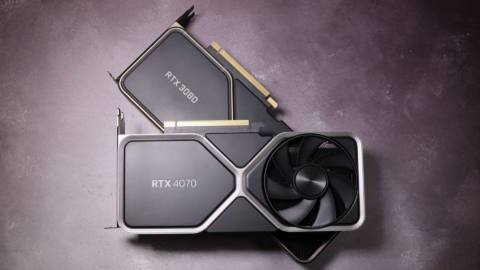According to a new report from Digitimes, Intel's upcoming Battlemage gaming GPU will be made on TSMC's 4nm silicon (via TechPowerup), also known as N4. That's both a step up on and a natural progression from the 6nm node used for its existing Alchemist GPUs, such as the Intel Arc A770. But could it also be a potential problem?
Both AMD and Nvidia's existing GPUs are already produced on similar TSMC silicon. Okay, AMD's RDNA 3 GPUs, such as the Radeon RX 7800 XT, and Nvidia's Ada Lovelace GPUs, like the RTX 4070, are on TSMC's N5 node. But N5 and N4 are derivations of the same basic node and closely related.
The next really big step from N5 isn't N4, it's TSMC's N3 nodes, N3B and N3E. Apple has used N3B for a while and is already switching to N3E, while Intel's upcoming Lunar Lake laptop chip uses TSMC N3B. So, N3 silicon is very much live.
Likewise, those AMD and Nvidia N5 GPUs have been out for a while. Indeed, we're gearing up for next-gen GPUs from both companies. But Intel's Battlemage GPUs haven't been released. As things stand, there's no sign of a really imminent launch for Battlemage and at this rate it may not appear until next year.
Now, a production node isn't everything. But it does largely dictate what generation of GPU you're dealing with. It impacts both realistic transistor counts and has a significant impact on clockspeeds.
Put another way, it's not automatically a problem for Intel's Battlemage GPUs to be on the TSMNC N4 node. But could it develop into one depending on the timing of Battlemage's release?
Let's say Battlemage launches early next year. At that point, the N4 process would allow it to compete directly with the aforementioned AMD and Nvidia GPUs in whatever segment Intel has aimed for when it comes to transistor count and therefore be roughly equivalent in terms of things like the number of shaders and render outputs.
It is of course the overall transistor count or budget of a chip that dictates how many features can be squeezed in. Obviously Intel's GPU architecture is different from AMD's and Nvidia's so it's not a case of counting up the number of shaders and calling it a day in terms of comparative performance.
But the last thing Intel needs to be is at a disadvantage when it comes to transistor count and therefore hardware features. The problem is that both AMD and Nvidia have new GPUs coming, starting at the end of this year.
We're not expecting Battlemage to be aiming for the very high end, so if Nvidia wheels out a Blackwell-based RTX 5090 or RTX 5080 later this year that arguably doesn't matter. But what about the RTX 5070 and 5070 Ti models that follow in 2025 and AMD's rumoured RDNA 4 GPUs, which are said to be aiming for the mid-range GPU market, right where you'd think Intel's Battlemage is likely to be pitched?
Normally, you'd expect both to make a full node jump and that would mean TSMC 3nm of some kind. However, TSMC's transition to N3 has proven quite problematic, which is why Nvidia's new Blackwell AI GPU is on N4 not N3.

Best CPU for gaming: The top chips from Intel and AMD.
Best gaming motherboard: The right boards.
Best graphics card: Your perfect pixel-pusher awaits.
Best SSD for gaming: Get into the game ahead of the rest.
Arguably, the same can be said for AMD's new Zen 5 CPUs, including the Strix Point laptop APU, which are also on N4 but you might have expected to use N3. For now, it's not certain what node AMD and Nvidia's next-gen GPUs will use. But the critical mass of rumour suggests they will both go for some variant of N4.
If that's true, it could be Intel's saving grace. Early leaked roadmaps had Battlemage originally pencilled in for the beginning of this year. If it appears early 2025, that will make it around a year later than originally planned.
If AMD and Nvidia go with N3 silicon, that will make it very, very hard to compete as it will mean going up against much more complex GPUs with more features. But if both AMD and Nvidia have chosen the N4 node due to doubts over the readiness of the N3 node, well, even launching a year later than originally planned, Battlemage might be in with a shout of being competitive with the likes of an Nvidia RTX 5070 or an AMD 8800 XT.
It would, of course, be great if Intel could take the fight properly to AMD and Nvidia. A third player in the market would likely do wonders for competitiveness and in turn pricing. Watch this space.






